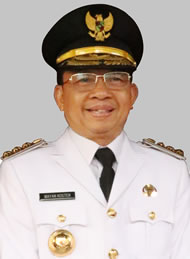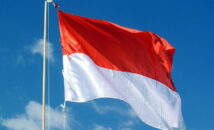Bali’s Governor Wayan Koster opened a consultative assembly on planning and development (Musrenbang – RKPD) for 2023 held on Wednesday, 06 April 2022, at Gedung Gajah Jayasabha in Denpasar.
At the meeting, Governor Koster expressed his appreciation for those who assisted Bali in arriving at the fourth year of the current five-year plan (2018-2023). Quoted by Beritabali.com, Governor Koster said most of his administration’s programs have operated smoothly despite the COVID-19 pandemic that has afflicted Bali and the rest of the world.
Governor Koster announced to loud applause: “Thank goodness and rejoice that we were able to carry out the development of Bali in a planned corridor. Likewise, the COVID-19 pandemic in Bali is being handled properly due to the hard work and the synergy achieved with the Bali Provincial government, the Kodam IX/Udyana Military Command, the Bali Police, Bali High Court, Regencies, Municipal Government of Denpasar, Traditional Village Councils, the Bali-Hindu Council, traditional villages, and other components of island society.”
The Governor said that efforts to transform Bali’s structure and fundamental economy yielded results. He also thanked Joko Widodo, the President of the Republic, and the Minister for National Planning (Bappenas), who have embraced Koster’s concept of transforming the Balinese economy. The Governor’s presented his economic outlook on 03 December 2021 in a public presentation entitled “The Roadmap of a Kerthi Bali Economy towards a New Era for Bali that is Green, Resilient, and Prosperous.”

The underlying concept of the “Kerthi Bali Economy,” as explained by Koster, is for Bali to become economically independent, building on six leading pillars, namely:
- The agricultural sector is reliant on organic farming.
- The ocean-going industry and fisheries.
- The industrial manufacturing sector and Bali-branding industries.
- The small and medium-sized industrial sectors including micro, mid-sized and cooperative enterprises.
- The creative economic sector and digital enterprises.
- The tourism sector.
By promoting these six sectors, the “Kerthi Bali” Economy will result in an island economy harmonious with nature, reliant on local resources, honors local wisdom, is green and environmentally friendly, quality-oriented, and adds value resilience, competitiveness, and is sustainable.
For future development in 2023 and beyond, the Governor explained that the funding for provincial development must come from the regional and national budgets.
Koster is recommending a list of 10 priority and strategic infrastructure projects that the national government should fund:
- The continuing construction of the “shortcut” connecting points 11 and 12 on the Singaraja – Mengwitani Highway costing Rp. 190 billion.
- The development of the Sangsit Seaport in Buleleng Regency at the cost of Rp. 240 billion.
- The development of the Batur Global Geopark in the Regency of Bangli at the cost of Rp. 350 billion.
- The construction of the Singamandawa Market in Kintamani in the Regency of Bangli at the cost of Rp. 75 billion.
- The development of a Cultural Arts Center in the Regency of Klungkung at the cost of Rp. 250 billion.
- The construction of a bridge connecting Nusa Lembongan and Nusa Ceningan at Nusa Penida in the Klungkung Regency at a cost of Rp. 57 billion.
- The construction of a water retention basin (Embung Unda) in the cultural region of Klungkung Regency at the cost of Rp. 236 billion.
- The zoning and organization of the shoreline areas of Nusa Penida in the Klungkung Regency at the cost of Rp. 80 billion.
- The construction of a crossing harbor at Gunaksa in the Regency of Klungkung at the cost of Rp. 336 billion.
- The construction of a Port at Ahmed in the Regency of Karangasem at the cost of Rp. 148 billion.






